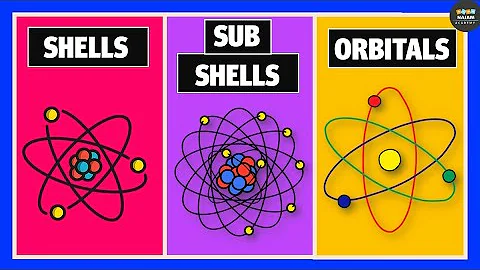How can I detect if I'm in a subshell?
Solution 1
In bash, you can compare $BASHPID to $$
$ ( if [ "$$" -eq "$BASHPID" ]; then echo not subshell; else echo subshell; fi )
subshell
$ if [ "$$" -eq "$BASHPID" ]; then echo not subshell; else echo subshell; fi
not subshell
If you're not in bash, $$ should remain the same in a subshell, so you'd need some other way of getting your actual process ID.
One way to get your actual pid is sh -c 'echo $PPID'. If you just put that in a plain ( … ) it may appear not to work, as your shell has optimized away the fork. Try extra no-op commands ( : ; sh -c 'echo $PPID'; : ) to make it think the subshell is too complicated to optimize away. Credit goes to John1024 on Stack Overflow for that approach.
Solution 2
How about BASH_SUBSHELL?
BASH_SUBSHELL
Incremented by one within each subshell or subshell environment when the shell
begins executing in that environment. The initial value is 0.
$ echo $BASH_SUBSHELL
0
$ (echo $BASH_SUBSHELL)
1
Solution 3
[this should've been a comment, but my comments tend to be deleted by moderators, so this will stay as an answer that I could use it as a reference even if deleted]
Using BASH_SUBSHELL is completely unreliable as it be only set to 1 in some subshells, not in all subshells.
$ (echo $BASH_SUBSHELL)
1
$ echo $BASH_SUBSHELL | cat
0
Before claiming that the subprocess a pipeline command is run in is not a really real subshell, consider this man bash snippet:
Each command in a pipeline is executed as a separate process (i.e., in a subshell).
and the practical implications -- it's whether a script fragment is run a subprocess or not which is essential, not some terminology quibble.
The only solution, as already explained in the answers to this question is to check whether $BASHPID equals $$ or, portably but much less efficient:
if [ "$(exec sh -c 'echo "$PPID"')" != "$$" ]; then
echo you\'re in a subshell
fi
Related videos on Youtube
Comments
-
 jesse_b over 1 year
jesse_b over 1 yearI'm trying to write a function to replace the functionality of the
exitbuiltin to prevent myself from exiting the terminal.I have attempted to use the
SHLVLenvironment variable but it doesn't seem to change within subshells:$ echo $SHLVL 1 $ ( echo $SHLVL ) 1 $ bash -c 'echo $SHLVL' 2My function is as follows:
exit () { if [[ $SHLVL -eq 1 ]]; then printf '%s\n' "Nice try!" >&2 else command exit fi }
This won't allow me to use
exitwithin subshells though:$ exit Nice try! $ (exit) Nice try!What is a good method to detect whether or not I am in a subshell?
-
K7AAY almost 5 years
-
 kemotep almost 5 yearsI am no expert but quickly looking things up it looks like you are already doing things correctly.
kemotep almost 5 yearsI am no expert but quickly looking things up it looks like you are already doing things correctly.$SHLVLkeeps track of what level you are at. anything more than 1 would be a subshell. -
 jesse_b almost 5 years@K7AAY: Yeah that's where I got the
jesse_b almost 5 years@K7AAY: Yeah that's where I got theSHLVLidea from but unfortunately it doesn't work from a subshell only a new bash invocation. @kemotep if you look at the example at the top of my question you can see thatSHLVLin fact does not work. -
mosvy almost 5 yearsPossible duplicate of How can I get the pid of a subshell?
-
Sparhawk almost 5 years@mosvy I feel like that is a different question. e.g. the
BASH_SUBSHELLanswer (even if controversial) wouldn't apply to that question. -
user541686 almost 5 yearsSaw the title on HNQ and thought this was a quantum mechanics question...
-
Greg Burghardt almost 5 yearsI feel like I saw a movie about this once. Something like you need to keep an item with you at all times as an anchor... like a top. If you are in a sub shell, the top keeps spinning and never falls over. If you are in the top level shell it eventually stops and topples over.
-
 vijay almost 5 years@GregBurghardt Inception
vijay almost 5 years@GregBurghardt Inception
-
-
 muru almost 5 yearsNit:
muru almost 5 yearsNit:BASH_SUBSHELLis set pretty reliably, but getting its value correctly is iffy. Note what the docs say: "Incremented by one within each subshell or subshell environment when the shell begins executing in that environment." I think that in the pipe example, bash hasn't yet begun executing in that subshell when the variable is expanded. You can compareecho $BASH_VERSIONwithdeclare -p BASH_VERSION- the latter should reliably output 1 with pipes, background jobs, etc. -
mosvy almost 5 years@muru still feels like a bug. if it hadn't begun executing yet then how come that
$BASHPIDalready has the right value? -
 muru almost 5 yearsEven say,
muru almost 5 yearsEven say,eval 'echo $BASH_SUBSHELL $BASHPID' | catwill output 1 forBASH_SUBSHELL, because the variable is expanded after execution has started. -
mosvy almost 5 yearsall those arguments should also apply to to process & commands substitution, bg processes, yet it's only the pipelines which are different. Looking at the code, incrementing
subshell_levelreally is deferred in the case of foreground pipelines, which probably has some reason, but which I'm not able to make out ;-) -
 muru almost 5 yearsYou're right. Seems Chet explicitly intends it that way. lists.gnu.org/archive/html/bug-bash/2015-06/msg00050.html : "BASH_SUBSHELL measures (...) subshells, not pipeline elements." lists.gnu.org/archive/html/bug-bash/2015-06/msg00054.html: "I'm going to think about whether I should document the status quo or expand the definition of `subshell' that $BASH_SUBSHELL reflects."
muru almost 5 yearsYou're right. Seems Chet explicitly intends it that way. lists.gnu.org/archive/html/bug-bash/2015-06/msg00050.html : "BASH_SUBSHELL measures (...) subshells, not pipeline elements." lists.gnu.org/archive/html/bug-bash/2015-06/msg00054.html: "I'm going to think about whether I should document the status quo or expand the definition of `subshell' that $BASH_SUBSHELL reflects." -
JoL almost 5 yearsThe
echodoes run in a separate process, but the expansion of$BASH_SUBSHELLin your example doesn't. Bash has no need of a subshell there, because it's just one command it needs toexec. It doesn't need to run more shell-code after that. I would argue that the(i.e., in a subshell)you quoted from the manpage is a mistake in the documentation. They probably meante.g.instead ofi.e.. As an example of a pipe that does imply a subshell,for i in 1; do echo $BASH_SUBSHELL; done | catoutputs1. -
 Eric Duminil almost 5 yearsIt would have been a convenient command in the movie Inception.
Eric Duminil almost 5 yearsIt would have been a convenient command in the movie Inception. -
mosvy almost 5 years@JoL you're wrong, the expansion happens in the separate process too, please read the links and examples from this discussion above; or just try with
echo $$ $BASHPID $BASH_SUBSHELL | cat. -
 Granny Aching almost 5 yearsIn Inception it's probably $SHLVL
Granny Aching almost 5 yearsIn Inception it's probably $SHLVL




